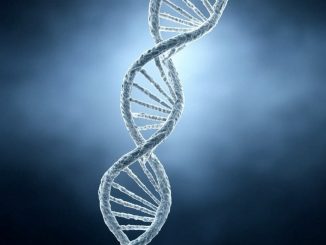
Scientists at Western University have made a remarkable discovery that could have far-reaching implications for DNA repair and biotechnology. The research team has identified a protein called DdrC (DNA Damage Repair Protein C) that demonstrates an extraordinary ability to prevent and repair DNA damage.
The protein was found in Deinococcus radiodurans, a bacterium known for its exceptional resilience to DNA-damaging conditions. This microorganism can withstand radiation levels 5,000 to 10,000 times higher than what would be lethal to a human cell.
To test the protein’s effectiveness, researchers introduced it into Escherichia coli (E. coli), a different bacterium. The results were astonishing: E. coli’s resistance to UV radiation damage increased by over 40 times. This finding suggests that DdrC functions as a standalone mechanism for DNA repair, a rarity in cellular biology.
Lead researcher Robert Szabla explains Deinococcus’ effectiveness at repairing damaged DNA.
“Imagine an NFL player who plays every game without a helmet or pads,” says Szabla, a graduate student in Western’s Department of Biochemistry. “He’d suffer concussions and multiple broken bones every single game but would somehow fully recover overnight, ready for practice the next day.” Szabla and his team identified DdrC as a crucial component in this remarkable DNA repair process.
The potential applications of this discovery are vast. Theoretically, the gene responsible for producing DdrC could be introduced into various organisms – plants, animals, and even humans – to enhance their cellular DNA repair efficiency.
Dr. Szabla also emphasized the significance of this finding in the field of biotechnology.
“The ability to rearrange and edit and manipulate DNA in specific ways is the holy grail in biotechnology,” he stated. The team envisions a future where DdrC could act as a cellular patrol system, actively scanning for and neutralizing DNA damage as it occurs.
Perhaps most intriguingly, Dr. Szabla suggested that this discovery might form the basis for a potential cancer vaccine. By enhancing the body’s natural ability to repair DNA damage, it may be possible to prevent the genetic mutations that lead to cancer development.
While the research is still in its early stages, the discovery of DdrC opens up exciting new possibilities in fields ranging from radiation protection to cancer prevention and treatment. As studies continue, this tiny protein could prove to be a game-changer in our understanding and manipulation of DNA repair mechanisms.
h/t: phys.org
- Bulenox: Get 45% to 91% OFF ... Use Discount Code: UNO
- Risk Our Money Not Yours | Get 50% to 90% OFF ... Use Discount Code: MMBVBKSM
Disclaimer: This page contains affiliate links. If you choose to make a purchase after clicking a link, we may receive a commission at no additional cost to you. Thank you for your support!


Leave a Reply